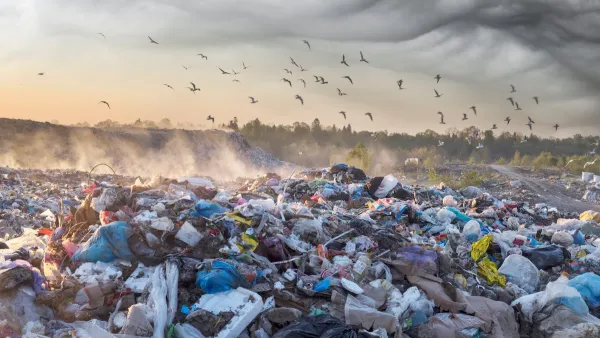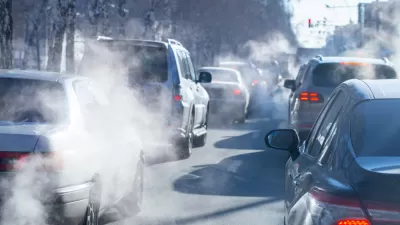NYC's recently released energy efficiency ratings are full of surprises: 1930s landmarks such as the Chrysler and Empire State Buildings outperformed later mid-century structures, as well as contemporary LEED-rated designs.
In New York City, the heating and cooling of buildings accounts for a staggering 80 percent of greenhouse gas emissions. For the last three years, the Bloomberg administration has mandated that the city's largest commercial buildings track their energy usage to help attain its goal of cutting all emissions by a third by 2030.
" has underscored the urgency of such efforts, and continuing climate change is expected to result in more severe storms and flooding," reports Mireya Navarro, adding, "[w]hile the city’s biggest commercial structures have been required to report energy use since 2010, this is the first year public disclosure has been mandated under a 2009 law that is among the first in the country to follow how buildings use energy." According to Navarro, "[b]ig residential buildings will face the same disclosure requirement next year" shedding greater light on how buildings use energy in the city that never sleeps.
Scores ranged from 3 to 84, with a median score of 68 for all commercial buildings reporting data. Navarro writes, "Older buildings tend to have higher Energy Star scores because they have thicker walls, fewer windows and less ventilation — superior 'thermal envelopes,' as a report [PDF] on the early results puts it. They are also less suited to energy-gobbling activities like computer data crunching, the downfall of some youthful but middling performers."
Though the positive performance of older buildings was astonishing to many, the less than stellar performance of LEED-rated buildings wasn't unexpected. “It’s disappointing, but at the same time, it’s not surprising because there are so many things that could be happening,” Scot Horst, senior vice president for the LEED program at the Green Building Council, said of some scores. "Poorer scores for newer and LEED-rated buildings can be attributed to the use of new building materials and techniques, as well as negligent occupant behavior such as leaving lights or computers on, and to overall building control management, which can be lax."
FULL STORY: City’s Law Tracking Energy Use Yields Some Surprise

Maui's Vacation Rental Debate Turns Ugly
Verbal attacks, misinformation campaigns and fistfights plague a high-stakes debate to convert thousands of vacation rentals into long-term housing.

Planetizen Federal Action Tracker
A weekly monitor of how Trump’s orders and actions are impacting planners and planning in America.

In Urban Planning, AI Prompting Could be the New Design Thinking
Creativity has long been key to great urban design. What if we see AI as our new creative partner?

King County Supportive Housing Program Offers Hope for Unhoused Residents
The county is taking a ‘Housing First’ approach that prioritizes getting people into housing, then offering wraparound supportive services.

Researchers Use AI to Get Clearer Picture of US Housing
Analysts are using artificial intelligence to supercharge their research by allowing them to comb through data faster. Though these AI tools can be error prone, they save time and housing researchers are optimistic about the future.

Making Shared Micromobility More Inclusive
Cities and shared mobility system operators can do more to include people with disabilities in planning and operations, per a new report.
Urban Design for Planners 1: Software Tools
This six-course series explores essential urban design concepts using open source software and equips planners with the tools they need to participate fully in the urban design process.
Planning for Universal Design
Learn the tools for implementing Universal Design in planning regulations.
planning NEXT
Appalachian Highlands Housing Partners
Mpact (founded as Rail~Volution)
City of Camden Redevelopment Agency
City of Astoria
City of Portland
City of Laramie




























